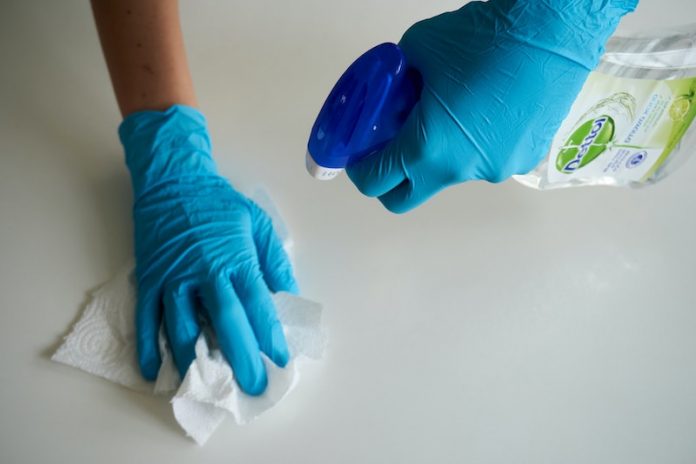
A recent study at the University of Arizona found that in the battle to slow or prevent the transmission of viruses, such as the novel coronavirus, continuously active disinfectants could provide a new line of defense.
While disinfecting high-contact surfaces is an important practice to prevent the spread of pathogens, these surfaces can be easily re-contaminated after the use of conventional surface disinfectants.
Alternatively, continuously active disinfectants work to actively kill microorganisms and provide continued protection over an extended period of time.
The study is released on MedRxiv. The lead author is Luisa Ikner, an associate research professor in the Department of Environmental Science.
During the course of respiratory illnesses such as COVID-19, aerosols released during sneezing and coughing contain infectious viruses that will eventually settle onto various surfaces.
Factors including temperature, humidity, and surface type can affect how long viruses such as SARS-CoV-2 will remain infectious after surface deposition.
The only tools people have currently in reducing the environmental spread of viruses via surfaces are hand sanitizer, hand washing, and the disinfection of surfaces.
This technology creates a new barrier in controlling the spread of viruses in indoor environments.
In the study, the team aimed to evaluate continuously active antimicrobial technology and its potential use against the transmission of viruses.
They evaluated this technology by testing a modified antimicrobial coating against the human coronavirus 229E, which is one of the viruses that cause the common cold.
They found even two weeks after the coating was applied, it was capable of killing more than 99.9% of the coronaviruses within two hours.
Human coronavirus 229E is similar in structure and genetics to SARS-CoV-2 but causes only mild respiratory symptoms. It can, therefore, be safely used as a model for SARS-CoV-2 to evaluate antiviral chemistries.
The results from these experiments may provide new opportunities for controlling the environmental transmission of COVID-19.
The team says the standard practice of surface disinfection using liquid-based chemistries according to product label instructions can render many viruses—including the coronaviruses—noninfectious.
In contrast, high-touch surfaces treated with continuously active disinfectants are hostile environments to infectious viruses upon contact and demonstrate increasing effectiveness over time.
Continuously active disinfectant technology has been around for almost a decade but has been focused primarily on controlling hospital-acquired bacterial infections, such as invasive methicillin-resistant Staphylococcus aureus, or MRSA.
Copyright © 2020 Knowridge Science Report. All rights reserved.



